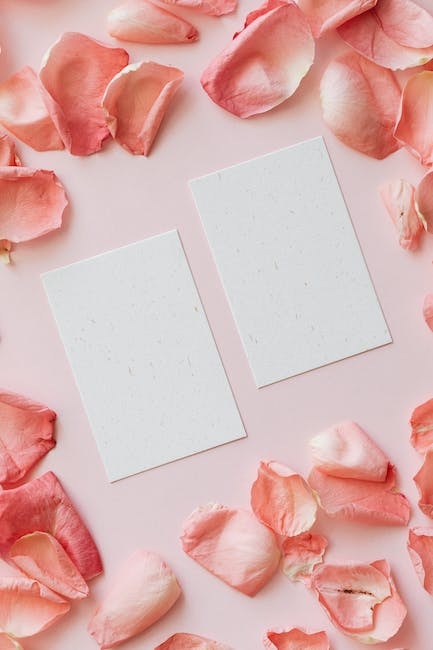Introduction to Zisha Tea Set
If you are a tea lover, you may already be familiar with the beauty and elegance of a Zisha tea set. Zisha, meaning “purple clay” in Chinese, refers to a type of clayware indigenous to the Yixing region in the Jiangsu province of China. The distinctiveness and quality of Zisha tea sets have made them highly sought after by collectors and tea enthusiasts around the world.
Historically, Zisha tea sets have been renowned for their ability to enhance the flavor and aroma of tea. The porous nature of the clay allows the tea to breathe, resulting in a more flavorful and fragrant cup. Additionally, the clay retains heat exceptionally well, making it ideal for brewing tea at the perfect temperature.
In this article, we will explore the history of Zisha tea sets, discuss their unique characteristics, learn how to choose and care for a Zisha tea set, and delve into the significance of these sets in Chinese culture. So, grab a cup of your favorite tea and join us on this fascinating journey into the world of Zisha tea sets.
History of Zisha Tea Set
The history of Zisha tea sets can be traced back to the Ming Dynasty (1368-1644) in China. During this time, tea drinking became popular among the Chinese elite, leading to a surge in demand for high-quality teaware. The Yixing region, known for its rich clay deposits, soon emerged as a prominent center for teapot production.
It is believed that the production of Zisha teapots began in the early 16th century, with the introduction of purple clay from the Huanglongshan mines in Yixing. The unique composition of this clay, combined with the craftsmanship of local artisans, resulted in teapots that were not only visually appealing but also highly functional.
Throughout the centuries, Zisha teapots gained recognition for their exceptional brewing capabilities. The porous nature of the clay allowed for the absorption of tea flavors, gradually enhancing the taste of each brew. As a result, Zisha teapots were sought after by tea connoisseurs who appreciated the subtleties and complexities of different teas.

In the Qing Dynasty (1644-1912), Zisha teapots reached the height of their popularity. Emperors and scholars alike cherished these teapots for their natural beauty and craftsmanship. Many esteemed individuals even commissioned teapots to be customized with their names or poetic verses.
Today, Zisha tea sets continue to be highly regarded and are considered a symbol of Chinese tea culture. Whether used for personal enjoyment, gifting, or collecting, these teaware pieces carry with them centuries of tradition and craftsmanship.
Characteristics of Zisha Tea Set
Zisha tea sets are renowned for their unique characteristics, making them highly sought after by tea enthusiasts. Here are some key features that distinguish Zisha tea sets:
- Clay Composition: Zisha tea sets are made from clay found exclusively in the Yixing region of China. This clay is known for its high levels of iron and other minerals, which contribute to the unique characteristics of the teapots. The clay’s porous nature allows it to absorb and retain the flavors of tea, gradually enhancing the taste of each brew over time.
- Natural and Unadorned Appearance: Unlike many other types of teaware, Zisha tea sets are designed to showcase the natural beauty of the clay. They are typically unglazed and minimally decorated, allowing the craftsmanship and texture of the clay to take center stage. The simple and elegant designs of Zisha tea sets reflect the appreciation for simplicity and nature in Chinese culture.
- Handmade Craftsmanship: Each Zisha tea set is meticulously crafted by skilled artisans, many of whom have inherited the art of pottery making from previous generations. The process of creating a Zisha teapot involves shaping the clay, carving intricate designs, and firing it at high temperatures. The attention to detail and craftsmanship that goes into making these tea sets contribute to their exceptional quality and beauty.
- Heat Retention and Even Heat Distribution: The high-density nature of the Zisha clay enables the teapots to retain heat effectively. This property allows the tea to steep at a consistent temperature, ensuring a well-balanced and flavorful brew. The heat distribution of Zisha tea sets is also remarkable, resulting in an even steeping process that brings out the true essence of the tea leaves.
- Seasoning and Patina: Over time, with continued use, the clay of a Zisha tea set develops a seasoning layer or patina. This layer is formed by the absorption of tea flavors and oils into the clay, creating a unique and personalized tea experience. The accumulation of the patina not only enhances the flavors of the tea but also adds to the aesthetic appeal of the tea set.
These characteristics, combined with the rich history and cultural significance of Zisha tea sets, contribute to their desirability among tea lovers worldwide. Whether you are an avid tea drinker or a collector of teaware, a Zisha tea set is sure to elevate your tea-drinking experience.
How to Choose and Care for a Zisha Tea Set
When selecting a Zisha tea set, there are a few factors to consider to ensure you choose a set that suits your preferences and will last for years to come. Here are some tips to help you make the right choice:
- Clay Type: Zisha tea sets can be made from different types of clay, each with its own unique qualities. Some popular types include zhuni, hongni, duanni, and lvni. Do some research or consult with a knowledgeable tea vendor to understand the characteristics of different clay types and select the one that aligns with your preferences.
- Size and Capacity: Consider how many people you typically serve tea to and how much tea you usually brew. Choose a tea set that is appropriately sized for your needs. Smaller teapots are ideal for individual or intimate tea sessions, while larger ones are suitable for serving multiple guests.
- Design and Style: Zisha tea sets come in various designs, ranging from classic and traditional to modern and sleek. Consider your personal aesthetic preferences and choose a design that resonates with you. Whether you prefer a minimalist or elaborate design, there is a Zisha tea set to suit every taste.
- Quality and Craftsmanship: Look for tea sets that demonstrate superior craftsmanship and attention to detail. Examine the teapot’s shape, handle, spout, and lid to ensure they are well-made and functional. Quality Zisha tea sets are often handcrafted and may exhibit subtle variations, adding to their charm.
- Caring for Your Zisha Tea Set: To maintain the quality and longevity of your Zisha tea set, it is important to care for it properly. Avoid using detergents or abrasive materials when cleaning your teapot, as they can damage the clay. Instead, rinse it with warm water and allow it to air dry. Season your tea set by brewing tea in it regularly, as this will help develop the patina and enhance the flavors.
By considering these factors and providing proper care, your Zisha tea set will continue to bring you joy and enrich your tea-drinking experience for years to come.
Significance of Zisha Tea Set in Chinese Culture
The Zisha tea set holds a significant place in Chinese culture and is deeply rooted in the country’s tea-drinking traditions. Here are some aspects that highlight the importance of Zisha tea sets in Chinese culture:
- Symbol of Elegance and Refinement: Zisha tea sets are regarded as symbols of elegance, refinement, and taste. Owning a Zisha tea set is considered a mark of sophistication and an appreciation for the finer things in life. It is often associated with the Chinese philosophy of “wenren wenxin,” which translates to “scholars have refined spirits.”
- Emphasis on Natural Beauty: Zisha tea sets embody the Chinese appreciation of natural beauty and the harmony between humans and nature. The unadorned and simple designs of Zisha teapots reflect the value placed on simplicity and the celebration of the authentic and unpretentious.
- Cultural Heritage: The tradition of Yixing clay teapot making has been passed down through generations. The art of crafting Zisha teapots is considered a part of China’s cultural heritage and is recognized as a significant artisanal craft.
- Tea Appreciation: Zisha tea sets are intimately connected to the practice of tea appreciation and Gongfu Cha, a Chinese tea brewing method that emphasizes the precise control of time, temperature, and tea-to-water ratio. The clay’s heat retention properties and the teapot’s small size make it ideal for Gongfu Cha, enabling tea drinkers to experience the full aroma, flavor, and complexity of the tea.
- Gifting and Collecting: Zisha tea sets are often exchanged as meaningful gifts and are highly prized by collectors. They are considered valuable and can appreciate in value over time, especially those made by renowned artisans. Gifting or collecting a Zisha tea set is seen as a gesture of respect and goodwill.
By understanding the significance of Zisha tea sets in Chinese culture, we can appreciate the depth of tradition and craftsmanship that goes into these teapots. Incorporating a Zisha tea set into your tea rituals not only enhances your tea-drinking experience but also allows you to connect with centuries of tea culture and heritage.


Leave a Reply